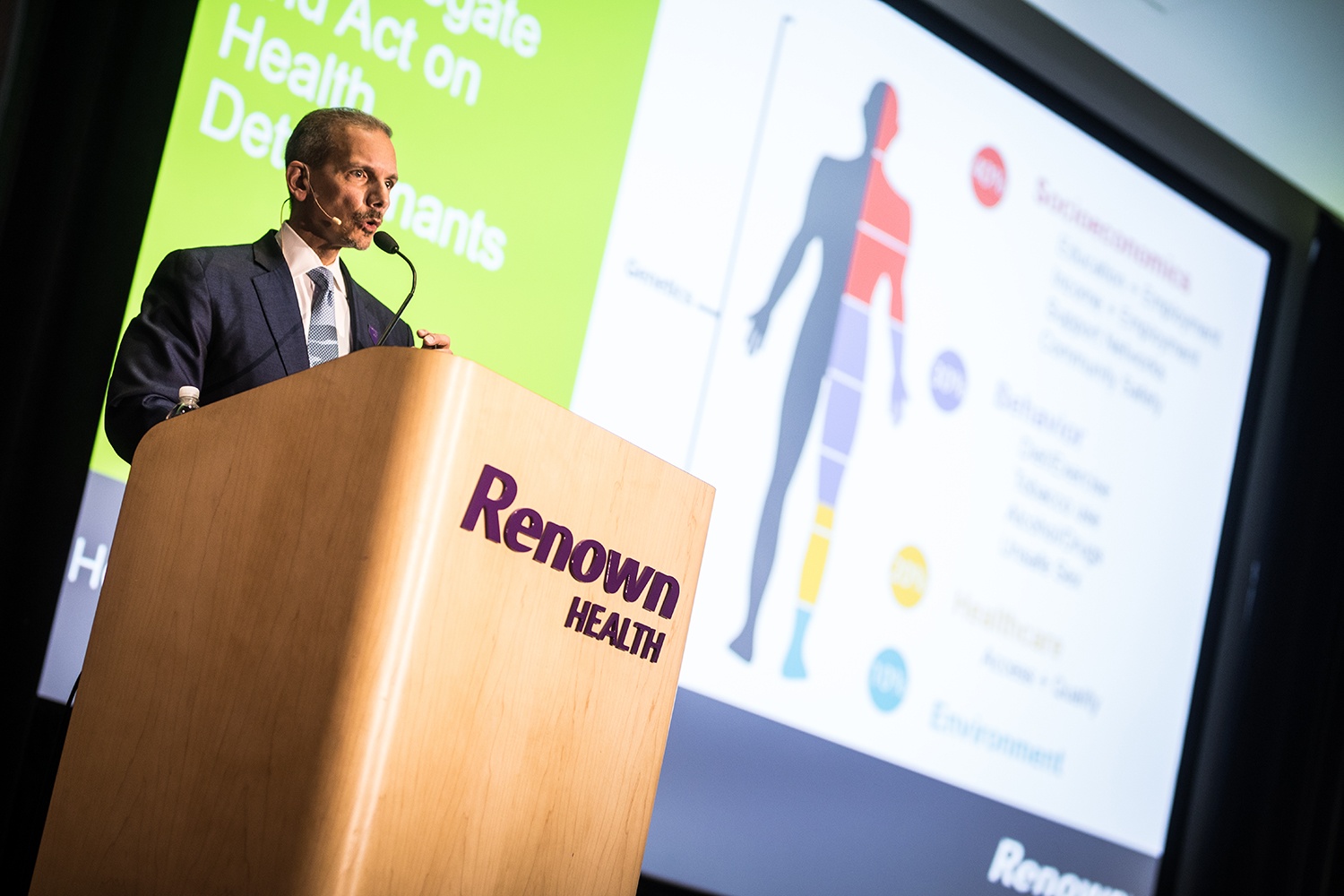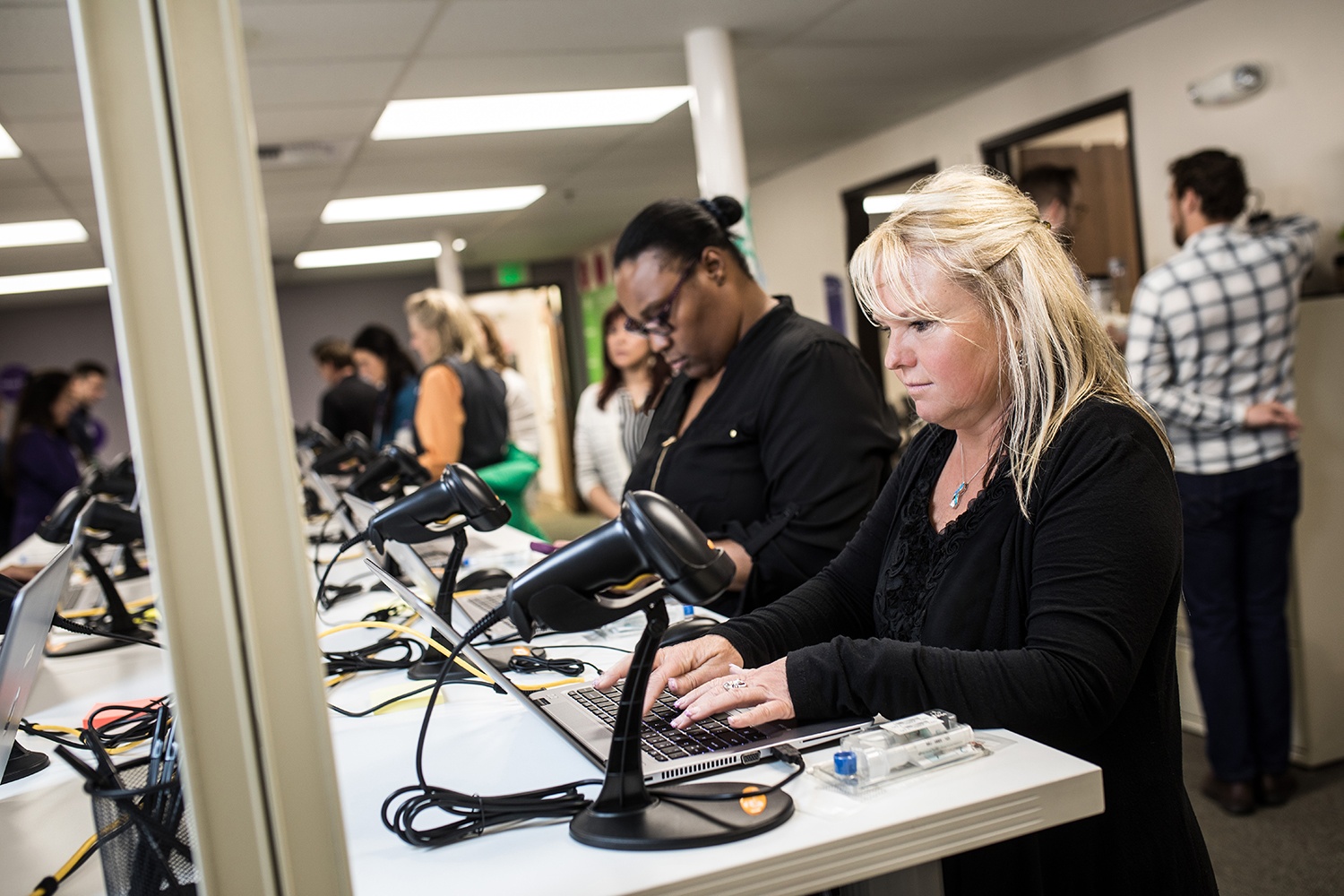Summary:
A Nevada study uses DNA, environmental and individual health data to create a regionwide map to improve patient outcomes. It’s a panel topic at AAPL’s spring gathering in Boston.
A Nevada study uses DNA, environmental and other data to create a regional map to improve patient outcomes.
The Healthy Nevada Project, a population analysis using genetics and environmental data, is using 10,000 DNA tests acquired from volunteers in 135 ZIP codes — with another 40,000 samples sought for a second phase.
That’s a fairly expansive database of population health risks, with a goal of helping Nevada address some of its most complex health and health care problems. The study, which began in 2016, already has unearthed valuable nuggets. For instance, an increased use of regional health care correlated with fluctuations in air quality and so-called “bad air events” such as wildfires.
Big numbers aside, the reach of the project might best be found on the household level, with the people it’s already helping:

Dr. Tony Slonim, one of the Healthy Nevada Project’s founders, says the study is helping people understand their risks and getting them involved at the clinical level. | Renown Health
A self-described “foodie,” who considered herself “chubby” but not fat, was stunned to learn from her DNA report that her BMI categorized her as medically obese. She followed up with her doctor and switched to a low-saturated-fat diet, which led to weight loss and better sleep.
A high school teacher signed up for the project while dealing with recurring health issues that often left her fatigued. She was fighting a lung infection on the day she submitted her saliva. The test showed she had Alpha-1, a genetic disorder that can lead to lung and liver disease. She immediately began treatment, including weekly infusions that are slowly improving her condition.
An active man with a love of mountain biking learned from his test he had the muscle composition common in elite power athletes. It also showed a risk toward age-related macular degeneration, a condition found in his family history. He updated his diet to include more foods that support healthy vision.
An early morning radio personality with fatigue issues was “blown away” when her DNA test showed she was less inclined to achieve deep sleep. Motivated by the report, she began researching techniques to get better rest and improve her health. “I really need to shut off at bedtime,” she determined.
These are optimistic stories in a populace that has struggled with health issues. More than a decade ago, Nevada’s health ranking fell in the bottom 10 nationwide. It has marginally improved in recent years, reaching No. 37 in 2017, according to the United Health Foundation. However, some of the northern region’s communities, especially the rural and underserved urban areas, are in crisis. For example, people die earlier in Nevada from pancreatic cancer than the rest of the U.S. and the rate of drug-induced deaths is seven times the national average, according to the Healthy Nevada Project.
State concerns remain over low public health funding per capita, a low high school graduation rate, a children’s poverty rate of nearly 24 percent and a high number of uninsured residents, the UHF says.
RELATED: Nevada DNA Project an 'Opportunity' to Improve Health Care
One of the project’s developers, Renown Health CEO Tony Slonim, MD, DrPH, CPE, FAAPL, FACHE, believes the Healthy Nevada Project can improve these statistics – and save lives.
The study is helping researchers “and Nevadans begin to understand how genetic, social and environmental factors can identify who may be at risk for disease, allow for quicker diagnoses, and encourage the development of enhanced diagnostic modalities more precise healthcare treatments,” Slonim says. “By sharing what we’re working on, we hope we will inspire other physician leaders to look beyond the walls of their organization and make efforts to address the health of their entire community and region.”
Testing already has been conducted on the first 10,000 participants. This year, Nevada Gov. Brian Sandoval announced plans for an additional 40,000 to be tested over the next two years. Volunteers ranged from age 18-90, all from the state’s northern region. In addition to genetic data, the analysis considers environment, socioeconomics and behavioral factors.
Slonim, who also is editor-in-chief of the Physician Leadership Journal, says the project blueprint was developed over coffee with fellow New Jersey transplant Joe Grzymski, PhD, a senior director at the Desert Research Institute, a Nevada higher education institution that analyzes the management of natural resources.
Researchers are already applying early data.
Providers and scientists have begun work on clinical programs and studies focused on Washoe County, where Reno is the county seat. A recent study determined Washoe’s age-adjusted death rates for heart disease, cancer and chronic lower respiratory disease were collectively 33 percent above the national rate. Because of this, communities and families face higher medical costs, reduced productivity and lower quality of life.

Joe Grzymski.
In the coming months, project researchers will begin providing advanced calcium score screenings to pilot phase participants at higher risk for cardiovascular disease. According to researchers, this will allow for the examination of links between genetics and calcium buildup in the heart.
Phase two will evaluate possible links between genetics and increased vulnerability to respiratory ailments, researchers say.
“Health care organizations around the country are moving from solely providing care inside hospital walls to improving health outcomes across communities,” Slonim says. “It starts with health literacy, and this is the largest health literacy project in the country. We are helping people understand their risks and getting involved at the clinical level to help them live healthier lives.”
Funding for the study was provided by the Renown Institute for Health Innovation, a collaboration between Renown Health and DRI and led by Slonim, Grzymski and Nevada’s Knowledge Fund. For phase two, the project will partner with Helix, a personal genomics company that uses “next-generation sequencing.”
Helix’s technology reads all 20,000 protein-coding genes and other regions in the body from DNA saliva tests, allowing for significantly more data to be analyzed, the company says.

Volunteers take part in phase two, which will use "next-generation sequencing" from Helix, a personal genomics company. The technology reads all 20,000 protein-coding genes and other regions in the body from DNA saliva tests, allowing for significantly more data to be analyzed, the company says. | Renown Health
“Fitting these criteria will ensure this landmark population health study mirrors the people of northern Nevada,” says Grzymski, who is serving as principal investigator of the Healthy Nevada Project. “Thanks to years of research, we know gender, age and ethnicity all play key roles in a person’s health risks. By accurately representing our region, we will be able to better understand the health issues we’re seeing communitywide and how to address them.”
In the years ahead, Renown IHI plans to expand the DNA testing statewide.
To address privacy concerns, researchers obtained a certificate of confidentiality from the National Institutes of Health, the project says. That allows researchers to legally refuse to disclose identifying information to authorities or for legal purposes. The data is also deidentified for research purposes, meaning only information relevant to the study can be shared. However, if researchers uncover information important enough to report to the volunteer – such as an increased risk of developing a serious disease – that person can be reidentified to relay those findings.
Rick Mayer is a senior editor with the American Association for Physician Leadership.
Topics
Environmental Influences
Quality Improvement
Healthcare Process
Related
The Pandemic Proved That Remote Leadership WorksAmid Plummeting Diversity at Medical Schools, a Warning of DEI Crackdown’s ‘Chilling Effect’How Classical Hematology Aims to Meet the Growing Healthcare Needs of an Aging American PopulationRecommended Reading
Strategy and Innovation
The Pandemic Proved That Remote Leadership Works
Strategy and Innovation
Amid Plummeting Diversity at Medical Schools, a Warning of DEI Crackdown’s ‘Chilling Effect’
Strategy and Innovation
How Classical Hematology Aims to Meet the Growing Healthcare Needs of an Aging American Population
Quality and Risk
How Facility Design Impacts the Patient Experience
